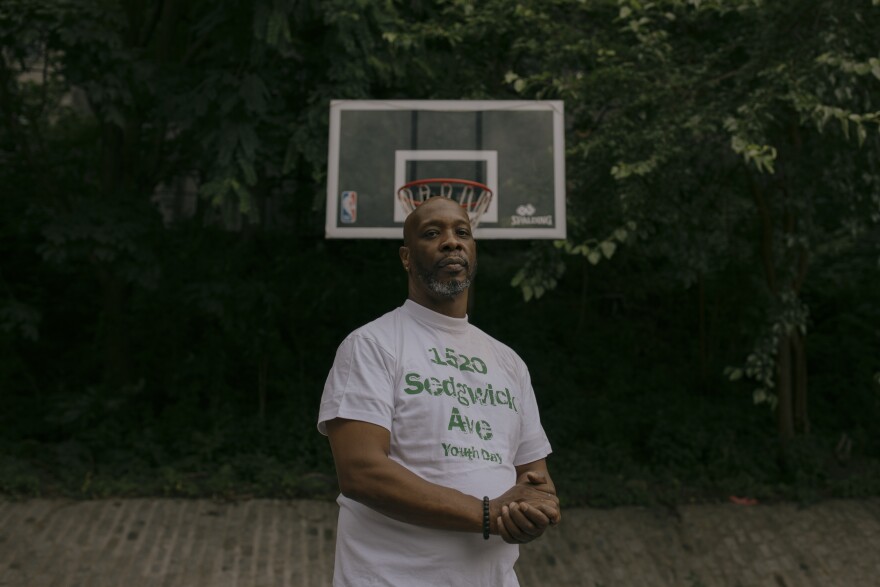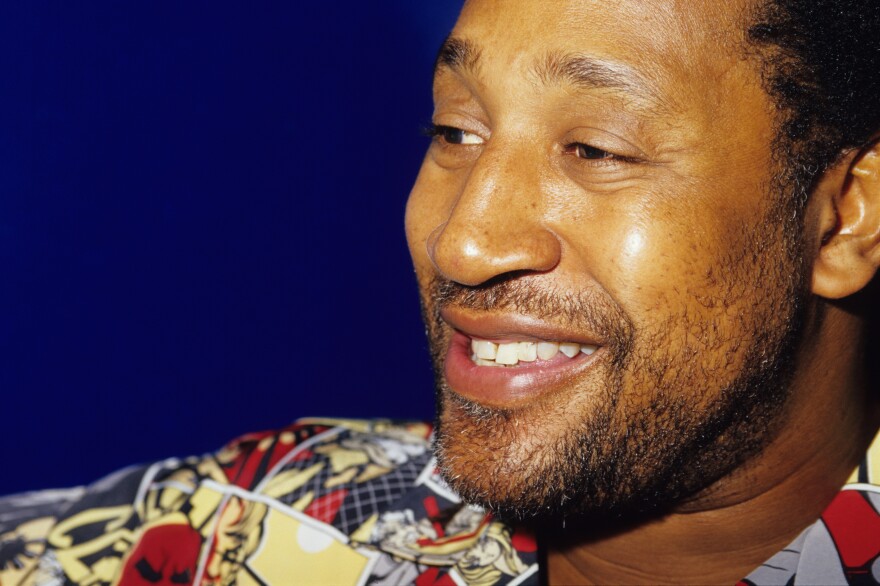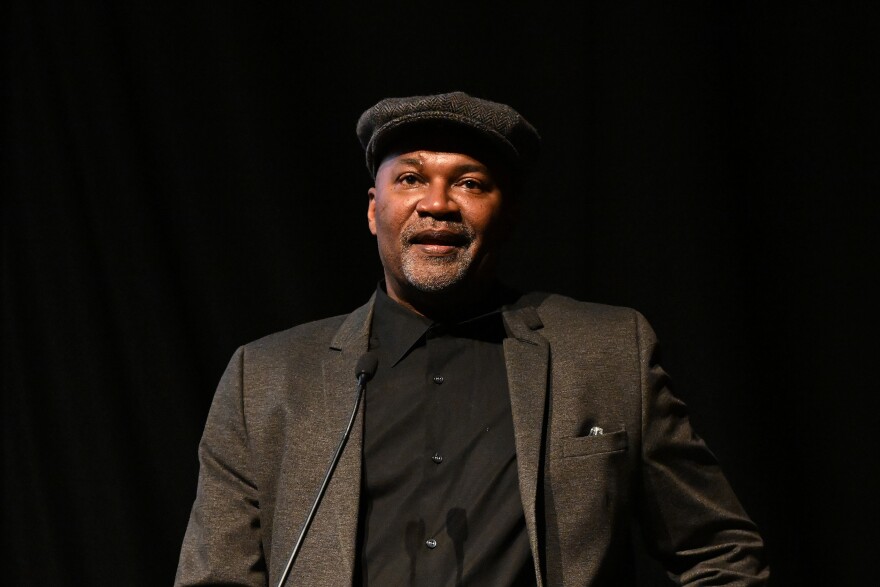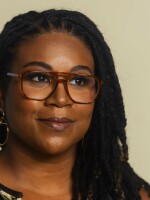When Jerry Leader was growing up, he made himself a toy set of DJ equipment.
Two empty cereal boxes were the turntables. For the records, he cut circles out of cardboard. The needle, a plastic spoon. He would sing to himself, "mixing" the tracks.
Leader grew up in an 18-story apartment building in the Bronx, New York City, during the 1970s and 1980s, with his parents and eight siblings. The address was 1520 Sedgwick Avenue. It's a tall, unremarkable high-rise overlooking an expressway.
But he says the building, and his unit, were always filled with music.
"I wouldn't pick another place in the world to have a childhood life. It was beautiful," says Leader, who is now 56. "My whole life revolved around music."
It was also home to an innovative young DJ who Jerry Leader often saw in performance. That DJ rocked a modest party for fellow teenagers on Aug. 11, 1973 in a small community room on the first floor; he was 18 at the time.
That event is now commonly celebrated as the birth of hip-hop.

In the 50 years since that party, hip-hop spread around the world. It has seeped into almost every facet of culture, from runway fashion to professional sport. It is inextricable from modern popular music.
It is silly, of course, to think of such sprawling impact as contained within one moment of creation. That isn't to say that hip-hop's nascent stage was not exploding with potential.
"I think there was a need for a back story because hip-hop got so big that people just needed to have a grand story for such a grand culture," says Jay Quan, a hip-hop historian.
At the center of that grand story is Clive Campbell, better known as DJ Kool Herc. By August of 1973, he had already learned a fair bit about the art of disc jockeying.
"My sister gave a party to go back to school," Herc said with a laugh in a recent interview. He's 68 now. "We rented the [community room] and it caught on."
Cindy Campbell, Herc's younger sister, threw that party because she wanted to be able to buy new clothes for the upcoming school year. Admission was 25 cents for girls, and 50 cents for boys.
Today, that community room at 1520 Sedgwick Avenue remains relatively unchanged from what it looked like in the '70s, according to Jerry Leader. It has low ceilings, a small kitchen and storage closets off to one side. There's no plaque or memorabilia — nothing to suggest that a musical revolution began in this space.
Leader was too young to attend this particular party — he was 6 at the time — but grew up hearing about it. He points out where the action would have been.
"Herc was set up in a closet there with his music, and they all jammed out here," Leader says. "This is it."

"Everybody that talks about Herc's parties back then talks about two things," says Jeff Chang, author of the definitive hip-hop history Can't Stop Won't Stop. "They talk about the intensity, the pure sound of the sound system — but they also talk about the music that Herc played."
Herc, who emigrated from Jamaica when he was 12, had seen and internalized the often competitive culture of traveling Jamaican sound systems. ("I was into sound," he told us.) He'd also absorbed much of the record collection of his father, an avid music collector. As a DJ, he prided himself on his variety and programming, including rare and unreleased records he acquired. ("I play a little bit of everything, you know what I'm saying?")
But it wasn't just the music that he played — it was also how he played it.
"He would just focus in on the percussive breakdowns, where the crowds went wild," Chang says.
Herc noted that dancers were especially energized during the brief drum-beat or rhythm section interludes of funk and soul records — often called "breaks." He developed a technique where he'd play the break from one record, then immediately play just the break from another record on his other turntable, then cue up another break on his first turntable ... and on and on.
He also figured out how to use his two turntables to loop a single break with two copies of the same record. He's referred to these techniques as the "merry-go-round."


"The best part of the records, I went to it," Herc said in our phone conversation. "I go right to the yolk."
Any of these merry-go-rounds would have formed just a tiny part of his Aug. 11, 1973 set. But for dancers, what was once just a six-second drum solo could now last a lot longer.
Over time, partygoers developed dance styles to these extended breaks. They became known as b-boys and b-girls – and the thing they were doing became b-boying, or breaking, or breakdancing.
And as the night wore on, Herc and his friend Coke La Rock would talk over the beats.
"They're seeing folks in the party, their friends, and they'll shout people out, they'll do it in these funny little rhymes," Chang says. "And these rhymes develop into more rhymes, right? You know, shouts and cries that are basically about urging the party to get higher and higher. So they keep on kind of evolving that and that actually turns into rap."
Between the people on the mic emceeing, the b-boys and b-girls going wild, and DJ Kool Herc featuring the breaks, many point to this party as the one that started it all.

"I mean the beautiful thing about this is we're talking about a house party that maybe had at tops approaching a hundred folks, including the kids and the parents who are in the room. And this sort of extended family gathering is now looked back upon as the birth of hip-hop. It's kind of mind-boggling," Chang says.
In Can't Stop, Won't Stop Chang writes: "It has become myth, a creation myth, this West Bronx party at the end of the summer in 1973." And it's been the subject of some debate over the years.
"If you notice, other genres of music generally don't have this kind of back story," Jay Quan says. "You know, nobody says the day that, you know, this blues player strummed his guitar a certain way, rock 'n' roll was born."
It isn't that this party in 1973 didn't take place – but Jay Quan and other historians point out that some of the same innovations were going on at other parties in other places.
At the time, this party-culture phenomenon didn't even have a name — the term "hip-hop" wouldn't be coined for several more years — and most people, even the ones involved in it, were not considering its future.
Jay Quan puts it this way: "It was poor, urban people kind of making lemonade out of lemons."

The Bronx was at a low point in the early 1970s. Over previous decades, redlining, urban renewal schemes, and highway development sent a once-diverse working-class community into economic collapse. In November 1972, The New York Times analyzed census data, reporting that The Bronx had "the smallest slice of prosperity and the largest proportion of poor families among the 19 counties of the tristate metropolitan region and among all 62 counties of New York State."
New York City as a whole was facing a fiscal crisis — which it used to justify disinvestment from policing, sanitation and firefighting resources in areas like The Bronx. It became easier and more lucrative for many landlords to burn down old, abandoned apartment buildings for insurance money than to maintain them for people to live. In the late 1960s, youth gangs surged — and violence escalated to the point where the gangs organized their own peace accord in 1971.
For kids in this environment, one thing they could do for fun was go to block parties — and get into the music.
"They were young people entertaining themselves, perhaps trying to stay out of trouble," says Jay Quan. "They couldn't get into, you know, the more sophisticated clubs like Studio 54 and places like that."
A lot of the kids were too young. But also you needed to dress a certain way for those clubs, and generally needed a certain amount of wealth.
So the DJ scene in the Bronx grew. And Kool Herc was at the center of it.
Herc's parties spilled out of that tiny, first-floor rec room, and into places like the public park right down the street. It's an asphalt space, no grass, a little bigger than a basketball court, sandwiched in between 1520 Sedgwick and another high-rise. Herc would set up his big sound system on one end, and play for hours.
The park was at the bottom of a basin, carrying Herc's sound through the neighborhood like a funnel. People would walk toward the music, coming to join the party.
"I mean, boom boom, his speakers, you could feel them on the bottom of your feet, the bass," Jerry Leader remembers, pointing to his shoes. "And this long block, you could hear the music all the way down."
For the next few years, through the mid '70s, Herc's reputation grew. He moved to larger parks; got gigs in clubs; inspired other DJs who furthered his innovations with breaks.
People in other parts of New York were starting to find out — including music journalist and filmmaker Nelson George, who was an intern at Billboard in 1978. George was one of the first to write about DJ Kool Herc, after seeing a flyer at a record store near Manhattan's Times Square for a show Herc was putting on in the Bronx.

"There were a bunch of kids kind of hanging out, and eventually a van pulls up and a bunch of guys get out," George says. "They pull out a card table, a cable. And there's some speakers, pretty big speakers. And I'd never seen this at the time — they went to the light lamp and they unscrewed the base of the lamp and they took this industrial thing and hooked it into the light from the city. And then pulled it through the fence and set up their equipment using electricity from the light. And that guy was Kool Herc."
George went on to write that Herc was a "musical innovator of the turntables ... his reputation as a party master in the Bronx ... unsurpassed."
"For me to say that, all I can think about now is that that must have struck me. It struck me as really different from everything else I was hearing," George says.
And he noticed something else: younger people were watching, intent on learning how Herc did what he did.
"They're seeing this stuff in real time and they're like, 'Oh, two turntables,' you know," he recalls. "You can see how it spread because it was accessible to teenagers and kids and, you know, sparked their imaginations."
DJ dreams were spreading. Expensive DJ equipment was still a limiting factor.

That began to change one night in July of 1977, when a massive blackout hit New York City. Amid the widespread looting, some rushed into electronics stores.
"People had turntables. People had speakers. People had mixers," George says. "And so there's an argument to be made that the proliferation of this equipment around the city in the hands of young people, it spread that hip-hop DJ culture around."
New crews popped up almost overnight — and not just in the Bronx. And real competition started too, as every crew aimed to get the attention of an ever-growing crowd of fans.
That same year, Herc himself pulled back from performing, after being stabbed at a club gig.
"Everybody is innovating and doing things in their own kind of way," says historian Jeff Chang. "The dances have changed. The kids who are coming into it now, they're younger, they're hungry. They want to put their stamp on it. And at some point, this overtakes what Herc built."
Debora Hooper was 14 years old back in 1977, after the blackout. She was living in the South Bronx, bored in her room on the 19th floor of her apartment building one summer day, when she heard music floating through her open window.
She walked down to a nearby park to find a group of boys DJing and emceeing, and eventually asked if she could get on the mic.
She became Debbie D — later MC Debbie D, when she went out on her own as a solo female rapper in the '80s. She's known as one of the pioneers of early hip-hop — along with DJ Kool Herc and a handful of other artists.
She remembers that in the earliest days of this movement, few saw it as a viable career.
"Me and all of the pioneers are sitting there trying to figure out, well, what are you going to do after high school?" she says. "You're not doing this, because there was no money. Nobody saw a future in hip-hop in '79 and '80."
That's obviously changed. For Debbie and other early pioneers — most of whom never had a real record deal or saw major financial gains — the success of hip-hop is a little bittersweet.
"I think it's great. I mean, people have to get a living in any way that they can get a living," she says. "The only issue that I have with it is that everybody is profiting off of hip-hop but the pioneers, those of us that really laid the foundation to it."
Many have found ways to stay involved in the culture. MC Debbie D is an artist-in-residence at the New Jersey Performing Arts Center, teaching rap and emceeing for kids, and also teaching hip-hop education at New Jersey public schools. Her collection of flyers from the days before the arrival of rap records represents what she calls "the only authentic documents" of these early days.

Fifty years after the now-fabled party, DJ Kool Herc also wants those who make hip-hop to remember to be custodians of the culture — to stop the senseless violence associated with it. He reminds hip-hop to "look out for your health" — to "eat right" — to learn from his example, that "you're going to get old, too."
"Hip-hop, you've come a long way," he said. "Give back to hip-hop. Give back."
Unlike the next generation of DJs he inspired — preeminent among them Grandmaster Flash and Afrika Bambaataa — Herc would not capitalize on the advent of commercial hip-hop recording, which started at the end of the '70s. Still, in our conversation, Herc expressed gratitude for those who have taken note of his contribution, and gratitude for what hip-hop has given him.
And he repeatedly insisted that while his scene may have been informed by many aspects of culture in the Bronx – it was not, in his understanding, a violent or segregated scene. He said it wasn't a "Black thing" or a "white thing" or a Puerto Rican thing.
It was full of youth, and energy, and potential.
"Everybody get in, do your thing," he said. "You get in, you party."
Copyright 2023 NPR. To see more, visit https://www.npr.org. 9(MDA2NzIzNDU3MDEyOTQwNzY4ODRmZGYzYw004))





